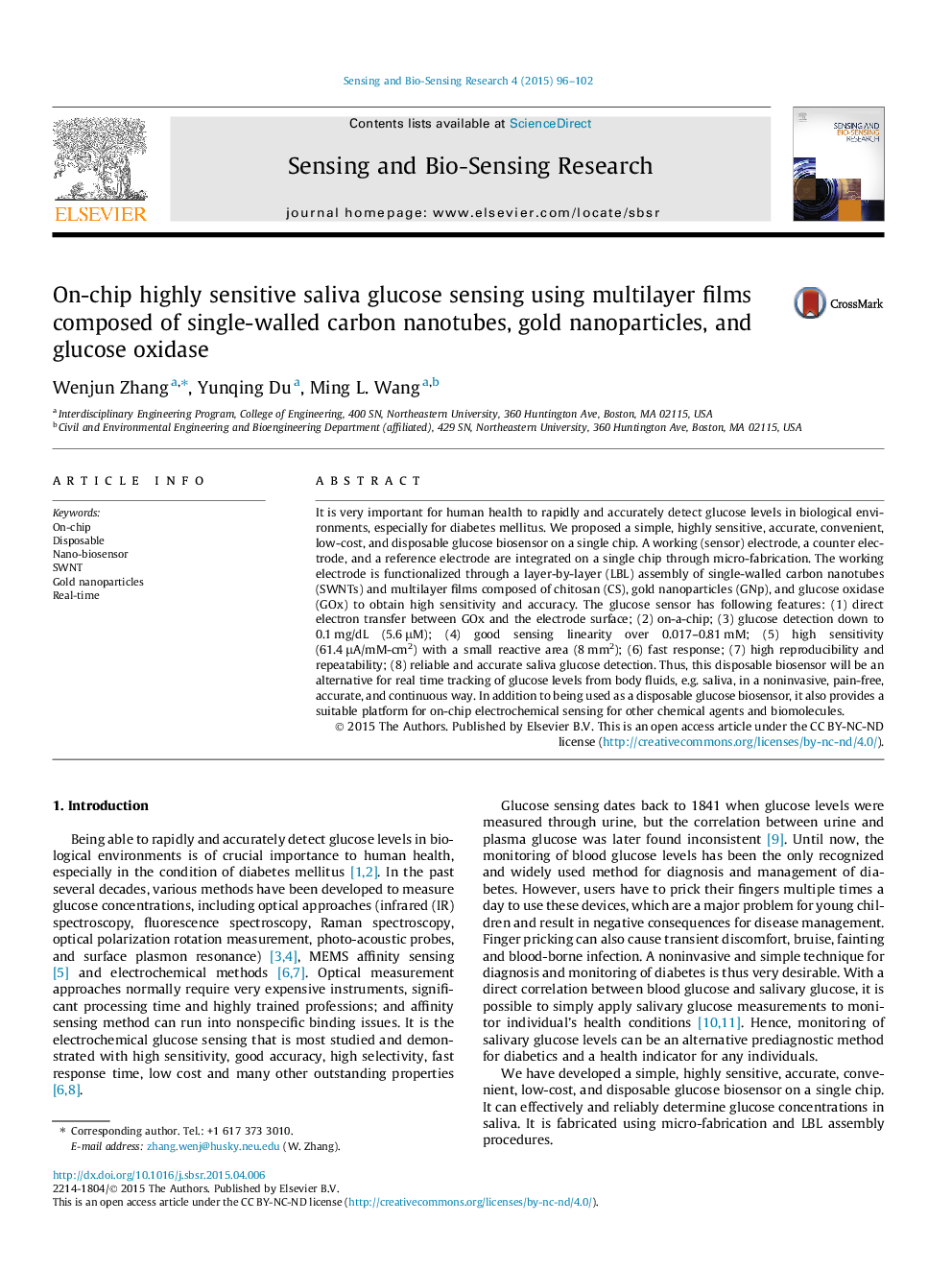| کد مقاله | کد نشریه | سال انتشار | مقاله انگلیسی | نسخه تمام متن |
|---|---|---|---|---|
| 807810 | 1468293 | 2015 | 7 صفحه PDF | دانلود رایگان |
It is very important for human health to rapidly and accurately detect glucose levels in biological environments, especially for diabetes mellitus. We proposed a simple, highly sensitive, accurate, convenient, low-cost, and disposable glucose biosensor on a single chip. A working (sensor) electrode, a counter electrode, and a reference electrode are integrated on a single chip through micro-fabrication. The working electrode is functionalized through a layer-by-layer (LBL) assembly of single-walled carbon nanotubes (SWNTs) and multilayer films composed of chitosan (CS), gold nanoparticles (GNp), and glucose oxidase (GOx) to obtain high sensitivity and accuracy. The glucose sensor has following features: (1) direct electron transfer between GOx and the electrode surface; (2) on-a-chip; (3) glucose detection down to 0.1 mg/dL (5.6 μM); (4) good sensing linearity over 0.017–0.81 mM; (5) high sensitivity (61.4 μA/mM-cm2) with a small reactive area (8 mm2); (6) fast response; (7) high reproducibility and repeatability; (8) reliable and accurate saliva glucose detection. Thus, this disposable biosensor will be an alternative for real time tracking of glucose levels from body fluids, e.g. saliva, in a noninvasive, pain-free, accurate, and continuous way. In addition to being used as a disposable glucose biosensor, it also provides a suitable platform for on-chip electrochemical sensing for other chemical agents and biomolecules.
Journal: Sensing and Bio-Sensing Research - Volume 4, June 2015, Pages 96–102
